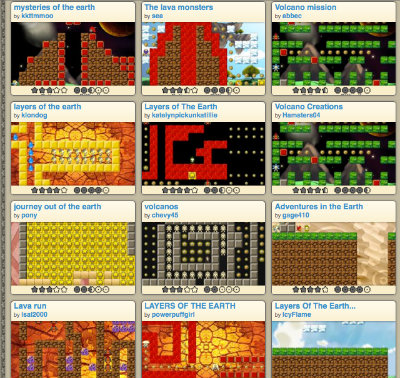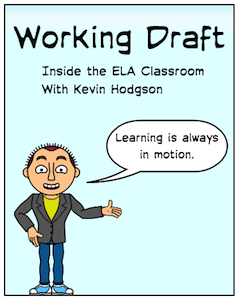Reluctant Writers & Game Design
A MiddleWeb Blog
Note: This post is adapted from a vignette I shared during the National Council of Teachers of English Annual Meeting (Nov. 21-24) as part of outgoing NCTE President Sandy Hayes’ presidential address. Sandy asked a few teachers to talk about classroom experiences that went beyond the standards.
Not long ago, I had a sixth grade student, a boy, who began the year refusing to write anything. Maybe you’ve had someone like him in your room, too. He wasn’t really rude about it. He was just resistant. He didn’t want to write.
At most, he would quickly jot down a few sentences. He didn’t see the value of his words and no amount of teacher mojo, celebratory talk or general encouragement seemed to change him. I learned from his mother that this had been his attitude about writing for some time, although he was an avid reader
Listen to a podcast of this post
Over the course of the fall, though, I watched this reluctant writer slowly emerge from his shell. It began mid-year, with our video game design unit. Here, finally, was something in school that he was interested in, and our work around using writing and design in the development of a game opened his writer’s eyes in ways that nothing had before.

Not only that, he was writing more than ever, and he found ways to connect his writing to something meaningful for himself and for his peers: a game he designed that would be published and played by an authentic audience. He even later submitted his game to the National Video Game Challenge.
I admit I was worried that once we moved past our video game design unit, he’d revert back into the one-sentence writer who’d occupied that desk for the first few months of the year. Happily, that was not the case.
Almost as if the dam had finally broken open, he began writing — inside of school and then outside of school (unheard of, according to his mom). Not just any writing, either. He began to work on a story that was inspired by his love of The Hunger Games, The Lightning Thief, and a host of adventure-style, story-driven video games that he enjoyed playing so much. It was as if some light suddenly went off in his head about the writing act and he was full-in.
He and I had long discussions about plot and characters, and how to pace a novel with scenes. He sent me drafts. I wrote him comments. His adventure story became a novel. He saw himself as a writer, finally.
Video games often get a bad rap — sometimes, that rap is justified — and I suspect not every English teacher looking for keys to unlock reluctant writers would see game design as analogous to writing. But you know, our exploration of game creation was the hook that turned this reluctant writer into a budding novelist.
I call that an Epic Win for the Ages.
For more information on how to use video game design in your classroom, visit our Video Game Design site.



































